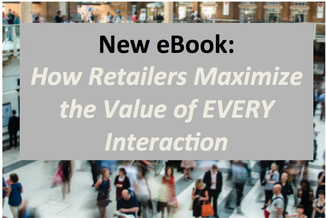In Part 1 of this series, we discussed how organizational objectives may change the implementation of a media mix and optimization platform. And in Part 2, we talked about measuring the efficacy of your efforts. Now, let’s talk about collecting and normalizing consumer responses and order/sales data.
In Part 1 of this series, we discussed how organizational objectives may change the implementation of a media mix and optimization platform. Once the objectives have been set, it’s time to formulate a plan around how to measure the efficacy of your efforts.
With the advent of big data, media mix measurement and optimization have become a required staple in the marketer’s toolbox. Effectively, media mix measurement and optimization are comprised of seven elements:
It’s true digital has taken over a lot of our lives. Whether it’s the all-knowing computers we carry in our pockets, backup cams on our cars, or the way many of us have been doing our jobs for the last year+, digital is clearly integrated in our lives. But when it comes to marketing, digital hasn’t run off the other ways of connecting with customers.
As marketers had to double-down on creative solutions during the pandemic, change has been happening behind the scenes. Whether it’s doing away with cookies or the recent news that Nielsen’s audience measurement tools are being applied to Twitter’s video content, data use is shifting, always.
The events of 2020 have a long tail. As marketers enter 2021 with decreased marketing budgets, ROI is of increasing importance. Analytics and the ability to evaluate performance are key, especially as media mix is evolving. And it’s a great time for marketers to check in with their plans and confirm they are still looking at the right metrics.
As companies are finalizing budgets for next year and marketers are fine-tuning their plans, it’s a popular time to look back at what worked and what didn’t. It’s also a critical opportunity to revisit your organizational strategy, realign your KPIs, and design a testing system that gives you actionable insights.
With the spotlight on the NSA wiretapping programs and the smell of Big Brother still fresh, it’s worth reviewing a bit about those who have the most data, are best at using that data and have the most to gain from data. I am not talking about you, Uncle Sam, I am talking about you, the data-savvy marketer.
As marketers, we use web, video and mobile strategies to reach our customer base. But what if you’re the provider of one or even all these services? While most marketers are focused on leveraging these channels for consumer engagement, top cable and telecomm providers are out there selling the very platforms that marketers depend on.
The appeal of automation makes sense: in a time where marketers are held to high standards and spread thin across an increased workload, anything you can set and forget is a welcome time saver. What companies didn’t predict, though, was how much time is attached to establishing automation. And while there are risks involved in automation’s perceived easy button, companies are still embracing it in droves. So how do marketers keep from blowing it?











